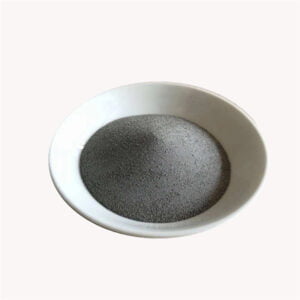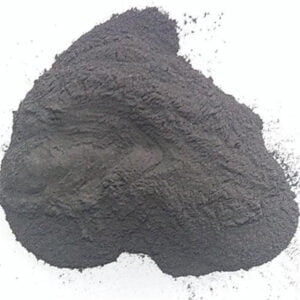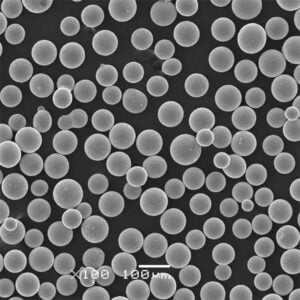Additiv tillverkning med elektronstråle (EBAM)
Innehållsförteckning
Översikt över Additiv tillverkning med elektronstråle (EBAM)
Electron Beam Additive Manufacturing (EBAM) är en banbrytande 3D-utskriftsteknik som använder en elektronstråle för att smälta och sammanfoga metallpulver lager för lager och skapa komplexa och höghållfasta delar. Processen revolutionerar tillverkningsindustrin genom att erbjuda oöverträffad precision, minskat spill och möjlighet att tillverka komponenter med intrikata geometrier som tidigare var omöjliga att uppnå med traditionella tillverkningsmetoder.
EBAM är särskilt populärt inom branscher som flyg- och rymdindustrin, fordonsindustrin och medicintekniska produkter, där efterfrågan på lätta men ändå starka material är hög. Genom att utnyttja elektronstrålarnas kraft kan tillverkarna skapa delar som inte bara är hållbara utan också mycket skräddarsydda för att uppfylla specifika designkrav.
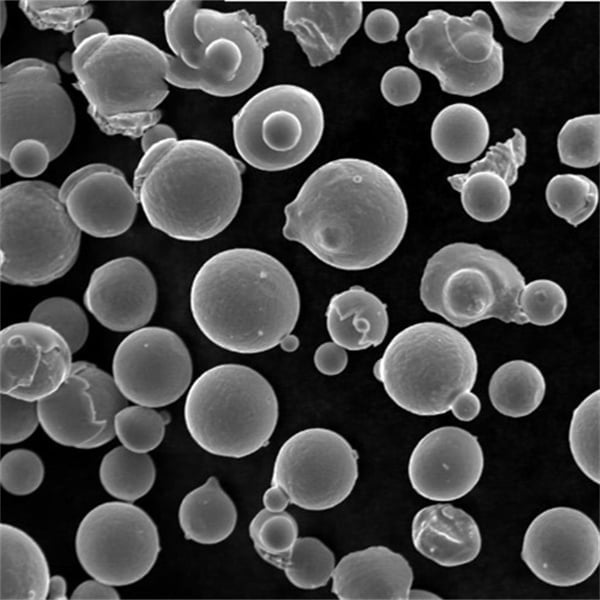
Olika typer av metallpulver som används i EBAM
När det gäller EBAM är valet av metallpulver avgörande. Olika metaller och legeringar har distinkta egenskaper som gör dem lämpliga för olika tillämpningar. Här följer en detaljerad genomgång av några specifika metallpulvermodeller som används i EBAM:
| Metallpulvermodell | Sammansättning | Fastigheter | Tillämpningar |
|---|---|---|---|
| Ti-6Al-4V | Titan, aluminium, vanadin | Högt förhållande mellan styrka och vikt, korrosionsbeständighet | Komponenter för flyg- och rymdindustrin, medicinska implantat |
| Inconel 718 | Nickel, krom, järn, molybden | Hög temperaturbeständighet, utmärkta mekaniska egenskaper | Turbinblad, raketmotorer |
| 316L rostfritt stål | Järn, krom, nickel, molybden | Korrosionsbeständighet, goda mekaniska egenskaper | Kirurgiska instrument, marin utrustning |
| AlSi10Mg | Aluminium, kisel, magnesium | Låg vikt, god värmeledningsförmåga | Bildelar, värmeväxlare |
| CoCrMo | Kobolt, krom, molybden | Biokompatibilitet, slitstyrka | Tandimplantat, ortopediska implantat |
| Maråldrat stål | Järn, nickel, kobolt, molybden | Hög hållfasthet, seghet | Flyg- och rymdindustrin, verktyg och formar |
| Koppar | Ren koppar | Utmärkt elektrisk och termisk ledningsförmåga | Elektriska komponenter, kylflänsar |
| Hastelloy X | Nickel, krom, järn, molybden | Motståndskraft mot höga temperaturer och oxidation | Gasturbinmotorer, kemisk bearbetning |
| Niob | Rent niobium | Hög smältpunkt, supraledning | Supraledande magneter, flyg- och rymdindustrin |
| Volfram | Ren volfram | Hög densitet, hög smältpunkt | Strålningsskydd, komponenter för flyg- och rymdindustrin |
Egenskaper och karaktäristik hos metallpulver i EBAM
| Fastighet | Ti-6Al-4V | Inconel 718 | 316L rostfritt stål | AlSi10Mg | CoCrMo | Maråldrat stål | Koppar | Hastelloy X | Niob | Volfram |
|---|---|---|---|---|---|---|---|---|---|---|
| Densitet (g/cm³) | 4.43 | 8.19 | 7.99 | 2.67 | 8.29 | 8.0 | 8.96 | 8.22 | 8.57 | 19.3 |
| Smältpunkt (°C) | 1604-1660 | 1430-1450 | 1375-1400 | 570-580 | 1300-1350 | 1413 | 1084 | 1320-1350 | 2477 | 3422 |
| Draghållfasthet (MPa) | 1000-1100 | 1250 | 550 | 330 | 900 | 2000 | 210 | 790-930 | 275 | 1510 |
| Hårdhet (HV) | 350 | 250 | 140 | 75 | 600 | 350 | 50 | 200 | 80 | 350 |
| Termisk konduktivitet (W/mK) | 6.7 | 11.2 | 16 | 151 | 14 | 20.3 | 401 | 11.2 | 53.7 | 173 |
Tillämpningar av Additiv tillverkning med elektronstråle (EBAM)
EBAM:s unika egenskaper gör den lämplig för ett brett spektrum av applikationer. Så här använder olika branscher denna teknik:
| Industri | Tillämpning | Fördelar |
|---|---|---|
| Flyg- och rymdindustrin | Turbinblad, strukturella komponenter | Lättvikt, hög hållfasthet, bränsleeffektivitet |
| Medicintekniska produkter | Specialanpassade implantat och proteser | Biokompatibilitet, exakt kundanpassning |
| Fordon | Motordelar, lättviktskomponenter | Förbättrad bränsleeffektivitet, lägre vikt |
| Energi | Turbinkomponenter, värmeväxlare | Beständighet mot höga temperaturer, hållbarhet |
| Verktyg | Gjutformar, matriser | Hög precision, kortare ledtider |
| Elektronik | Kylflänsar, elektriska anslutningar | Utmärkt termisk och elektrisk ledningsförmåga |
| Försvar | Pansarkomponenter, specialutrustning | Förbättrat skydd, låg vikt |
Specifikationer, storlekar, kvaliteter och standarder i EBAM
För att säkerställa kvalitet och enhetlighet i EBAM krävs att man följer specifika standarder och kvaliteter. Här är en omfattande guide till de specifikationer, storlekar och standarder som vanligen förknippas med EBAM-material:
| Material | Specifikationer | Storlekar | Betyg | Standarder |
|---|---|---|---|---|
| Ti-6Al-4V | ASTM B348, AMS 4911 | Pulverstorlekar 15-45 µm | Årskurs 5, årskurs 23 | ASTM F136, ASTM F1472 |
| Inconel 718 | AMS 5662, AMS 5596 | Pulverstorlekar 15-53 µm | AMS 5663, AMS 5596 | ASTM F3055, ASTM B637 |
| 316L rostfritt stål | ASTM A240, ASTM A276 | Pulverstorlekar 10-45 µm | UNS S31603 | ASTM F138, ISO 5832-1 |
| AlSi10Mg | ASTM B209, AMS 4201 | Pulverstorlekar 20-63 µm | Klass A356 | ASTM F3318 |
| CoCrMo | ASTM F75, ISO 5832-4 | Pulverstorlekar 10-45 µm | UNS R31538 | ASTM F1537, ASTM F75 |
| Maråldrat stål | AMS 6514, AMS 6520 | Pulverstorlekar 15-53 µm | Klass 250, klass 300 | ASTM A538, ASTM A646 |
| Koppar | ASTM B170, ASTM B152 | Pulverstorlekar 15-45 µm | UNS C11000 | ASTM B837 |
| Hastelloy X | ASTM B572, AMS 5536 | Pulverstorlekar 15-53 µm | UNS N06002 | ASTM F3317, ASTM F3055 |
| Niob | ASTM B392, ASTM B393 | Pulverstorlekar 20-60 µm | Betyg 1 | ASTM F2063, ISO 683-13 |
| Volfram | ASTM B760, ASTM B777 | Pulverstorlekar 5-45 µm | UNS W73100 | ASTM F2885 |
Leverantörer och prisuppgifter för EBAM Metal Powders
Att köpa in högkvalitativa metallpulver är avgörande för en framgångsrik EBAM. Här är en lista över några framstående leverantörer tillsammans med ungefärliga prisuppgifter:
| Leverantör | Material | Pris (USD/kg) | Region |
|---|---|---|---|
| Snickeriteknik | Ti-6Al-4V | $300-500 | USA |
| Sandvik | Inconel 718 | $150-250 | Europa, Nordamerika |
| Höganäs | 316L rostfritt stål | $30-50 | Globalt |
| ECKART | AlSi10Mg | $60-80 | Europa, Asien |
| Oerlikon | CoCrMo | $200-350 | Globalt |
| Snickeriteknik | Maråldrat stål | $100-200 | USA |
| GKN Additiv | Koppar | $50-70 | Europa, Nordamerika |
| Praxair | Hastelloy X | $250-400 | Globalt |
| Amerikanska element | Niob | $1000-1500 | USA, Europa |
| HC Starck | Volfram | $150-300 | Globalt |
Fördelar med additiv tillverkning med elektronstråle (EBAM)
EBAM erbjuder många fördelar som gör det till ett förstahandsval för många tillverkningsapplikationer:
- Hög precision: EBAM gör det möjligt att skapa mycket detaljerade och invecklade delar som är svåra att uppnå med traditionella metoder.
- Minskat avfall: Den additiva processen garanterar minimalt materialspill, vilket gör den till ett mer hållbart alternativ.
- Anpassning: EBAM är idealiskt för tillverkning av kundanpassade detaljer, särskilt inom branscher som medicinteknik där det krävs patientspecifika implantat.
- Styrka och hållbarhet: Delar som tillverkas genom EBAM uppvisar vanligtvis överlägsna mekaniska egenskaper och är mycket hållbara.
- Komplexa geometrier: Tekniken gör det möjligt att tillverka komplexa geometrier som ofta är omöjliga att framställa med konventionella metoder.
Nackdelar med Additiv tillverkning med elektronstråle (EBAM)
Trots sina många fördelar har EBAM också vissa begränsningar:
- Höga initiala kostnader: Installationskostnaden för EBAM-system kan vara ganska hög, vilket gör det mindre tillgängligt för småskaliga tillverkare.
- Materiella begränsningar: Alla material är inte lämpliga för EBAM, vilket kan begränsa användningsområdet.
- Krav på efterbearbetning: Delar kräver ofta betydande efterbearbetning för att uppnå önskad ytfinish och måttnoggrannhet.
- Komplexitet i driften: För att använda EBAM-system krävs specialkunskaper och utbildning, vilket ökar komplexiteten i driften.
Jämförelse mellan EBAM och andra tekniker för additiv tillverkning
| Parameter | EBAM | Additiv tillverkning med laser | Selektiv lasersintring (SLS) | Modellering med smält deposition (FDM) |
|---|---|---|---|---|
| Precision | Hög | Mycket hög | Måttlig | Låg |
| Material Avfall | Låg | Låg | Måttlig | Hög |
| Materialområde | Begränsad | Omfattande | Omfattande | Omfattande |
| Initial kostnad | Hög | Hög | Måttlig | Låg |
| Ytfinish | Kräver efterbearbetning | Kräver efterbearbetning | Bra | Dålig |
| Operativ komplexitet | Hög | Hög | Måttlig | Låg |
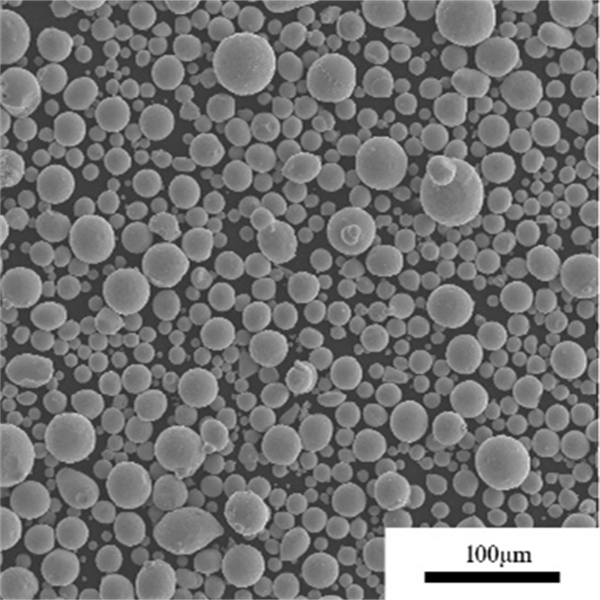
Vanliga frågor
| Fråga | Svar |
|---|---|
| Vad är EBAM? | Electron Beam Additive Manufacturing, en 3D-utskriftsteknik som använder elektronstrålar för att smälta och sammanfoga metallpulver. |
| Vilka metaller kan användas i EBAM? | Olika metaller som Ti-6Al-4V, Inconel 718, 316L rostfritt stål m.fl. |
| Vilka är fördelarna med EBAM? | Hög precision, minskat spill, kundanpassning, styrka och möjlighet att skapa komplexa geometrier. |
| Finns det några nackdelar med EBAM? | Höga initialkostnader, materialbegränsningar, krav på efterbearbetning och driftskomplexitet. |
| Hur står sig EBAM i jämförelse med andra 3D-utskriftsmetoder? | EBAM erbjuder hög precision och lågt spill, men har högre kostnader och komplexitet jämfört med metoder som FDM. |
| Vilka branscher drar nytta av EBAM? | Flyg- och rymdindustrin, medicintekniska produkter, fordonsindustrin, energi, verktyg, elektronik och försvar. |
| Vilka är de viktigaste egenskaperna hos EBAM-material? | Densitet, smältpunkt, draghållfasthet, hårdhet och värmeledningsförmåga. |
| Hur skiljer sig EBAM från additiv tillverkning med laser? | EBAM använder elektronstrålar medan Laser Additive Manufacturing använder laserstrålar. |
| Vilken efterbearbetning krävs för EBAM-delar? | Ytbehandling och justeringar av måttnoggrannhet krävs ofta. |
| Är EBAM miljövänlig? | Ja, tack vare minimalt materialspill och effektiv användning av resurser. |
Dela på
MET3DP Technology Co, LTD är en ledande leverantör av lösningar för additiv tillverkning med huvudkontor i Qingdao, Kina. Vårt företag är specialiserat på 3D-utskriftsutrustning och högpresterande metallpulver för industriella tillämpningar.
Förfrågan för att få bästa pris och anpassad lösning för ditt företag!
Relaterade artiklar

Högpresterande segment för munstycksvingar: Revolutionerande turbineffektivitet med 3D-utskrift i metall
Läs mer "Om Met3DP
Senaste uppdateringen
Vår produkt
KONTAKTA OSS
Har du några frågor? Skicka oss meddelande nu! Vi kommer att betjäna din begäran med ett helt team efter att ha fått ditt meddelande.

Metallpulver för 3D-printing och additiv tillverkning
FÖRETAG
PRODUKT
cONTACT INFO
- Qingdao City, Shandong, Kina
- [email protected]
- [email protected]
- +86 19116340731







